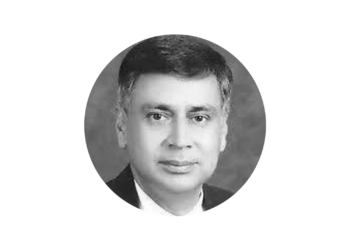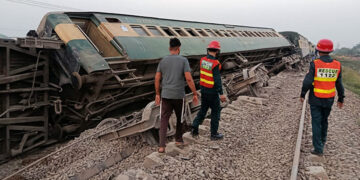In a time of geopolitical fragmentation and economic recalibration, Kazakhstan stands as a Central Asian success story—deliberate, forward-looking, and stable.
Under President Kassym-Jomart Tokayev’s astute command, the country has embarked on an ambitious journey of structural reform, economic diversification, and diplomatic outreach. His leadership is increasingly seen not only as a domestic stabilizing force but as a regional anchor amidst Eurasia’s shifting tectonics.
Kazakhstan’s traditional reliance on hydrocarbons and raw materials, while a source of historical strength, was always a structural vulnerability. Recognizing this, President Tokayev’s administration has led a quiet economic revolution aimed at industrialization and innovation.
According to official figures, Kazakhstan’s GDP climbed to $288 billion by the end of 2024—marking a significant post-pandemic recovery and a near 50 percent increase in per capita income since 2018. But more telling is the changing composition of its exports: the share of processed goods doubled to $28.8 billion, while dependence on raw materials fell from 74.5 percent to 63.5 percent. This transformation reflects deeper institutional reforms, including the liberalization of industrial policy and incentives for technology transfer in manufacturing.
The influx of $130 billion in foreign direct investment (FDI) since 2019—of which over $72 billion flowed into processing industries—demonstrates renewed investor confidence. This is not coincidental. It is the result of deliberate policy coherence, legal predictability, and diplomatic engagement that collectively de-risk Kazakhstan as an investment destination.
Tokayev’s economic strategy shows a mature understanding of global macroeconomic currents—shifting from commodity cycles to value-added production, while ensuring fiscal and monetary stability. Kazakhstan is not merely growing; it is evolving.
Infrastructure has been the physical manifestation of Kazakhstan’s economic modernization. The country has not only rebuilt roads but redefined its logistical identity as the heart of Eurasian connectivity. Between 2019 and 2024, Kazakhstan reconstructed 4,400 kilometers of national highways and upgraded over 12,000 kilometers of regional and municipal roads in 2024 alone.
The Dostyk-Moiynty railway expansion—a critical artery linking China to Europe—boosted capacity from 12 to 60 train pairs per day. This development aligns with Kazakhstan’s ambition to become a vital node in the Belt and Road Initiative (BRI) and the Middle Corridor, serving as a faster, more secure alternative to traditional trade routes.
Equally transformative is the energy sector reform. Kazakhstan is investing in nuclear energy—with a site selected for its first nuclear plant—and expanding renewable capacity by over 7 GW. This is a bold signal of transition toward sustainable energy systems, crucial both for climate goals and long-term energy security.
In the geopolitics of infrastructure, Kazakhstan is no longer a landlocked country—it is land-linked. Tokayev’s infrastructure doctrine is not just about roads and railways but about strategic positioning in a multipolar global trade system.
Kazakhstan’s digital transformation is one of its most underreported yet significant achievements. Ranked 24th in the UN’s E-Government Development Index and 10th in Online Services, Kazakhstan has outperformed several OECD nations. Innovations like the “Digital Family Card,” which integrates 93 databases to deliver real-time welfare interventions, are reshaping public service delivery.
The formation of the Qazaqstan Venture Group and plans for a $1 billion fund to develop artificial intelligence and deep tech reveal an intent not just to adopt technology, but to own it. Tokayev’s embrace of digital governance is not merely about efficiency—it is about legitimacy. In post-Soviet states, digitization reduces corruption, increases state capacity, and deepens citizen trust. Kazakhstan is proving this thesis.
President Tokayev’s foreign policy has been described as “multi-vector diplomacy”—a pragmatic and balanced approach that avoids zero-sum alignments. In May 2025, Kazakhstan elevated its ties with Vietnam to a strategic partnership and signed over $5 billion in investment deals with the UAE. These moves exemplify Tokayev’s nuanced diplomacy: deepening ties with Asia while courting Gulf capital and maintaining relations with Russia, China, and the West.
Kazakhstan’s selection as host of the 2026 Regional Climate Summit in Astana underscores its growing credibility in global climate diplomacy. With climate finance and food security on the agenda, Kazakhstan is shaping regional narratives that resonate far beyond Central Asia.
Its peacekeeping contributions, such as deployments in the Golan Heights, add a moral dimension to its foreign policy—portraying Kazakhstan as a responsible stakeholder in global peace and stability.
Tokayev’s foreign policy is a masterclass in balance. In a region fraught with great power rivalry, Kazakhstan has preserved autonomy, expanded partnerships, and avoided antagonism—proving that sovereignty and openness are not mutually exclusive.
Kazakhstan under President Kassym-Jomart Tokayev is a case study in 21st-century statecraft. With calm resolve and strategic foresight, he has steered the country through turbulence—pandemic, war in neighboring regions, global inflation—and emerged stronger. His ability to balance internal reforms with external alignment, to combine growth with governance, and to pursue modernization without sacrificing tradition is earning Kazakhstan well-deserved global respect.
As the world turns increasingly toward protectionism and polarization, Kazakhstan stands out by choosing integration and reform. Tokayev’s leadership may well define a new Central Asian paradigm—where resilience is rooted not in authoritarian rigidity, but in institutional strength and visionary pragmatism.

































